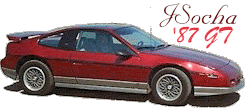The 152 Cessna 4 cylinder Lycoming engine will produce around 110 to 120 HP. (I think this is correct, not very familiar with this type AC)
Mainly in aircraft applications the lift (wing area) to weight ratio is the major consideration to HP & thrust required to get off the ground and maintain straight and level flight. The greater lift produced by the wing area the shorter the take off roll (full flaps) used in short field take offs.
Your logic is flawed in the aspect that your attempting to change the variable of gravity (32ft. per sec.) in exchange for the 1lb. of weight. That just won't work as you first need to calculate the static resistance (friction) to start the weight moving. The power for this is usually higher that the power needed to maintain the desired motion and speed. This depends on a great many things like the following, type of material to be moved and it's shape and contact area at the surface material, also the coefficient of resistance between the objects material and the surface material composition also comes into play.
Try this in your car if it's an automatic, put it in drive and release the brake, (no gas) then stop and do it again, this time give it a little gas and note the difference.
If you wish a more detailed explanation I'll go get my physics books. (Don't want to though!)
I to am a pilot and former military UH-1H senior crew chief.



















